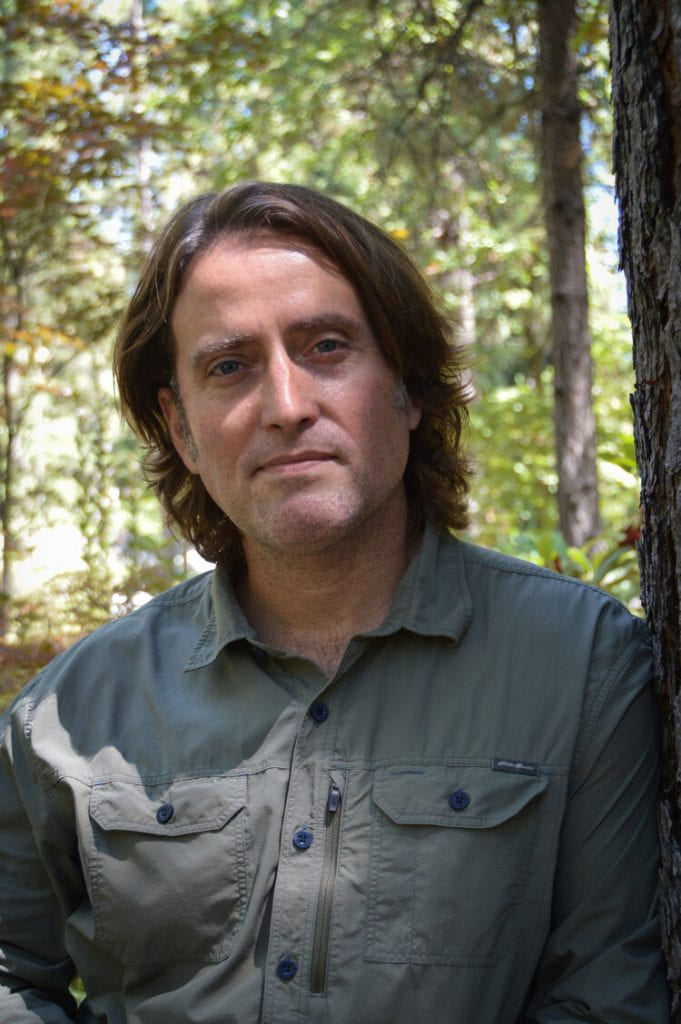Dr. Philip Loring

These thousand-year-old practices have a way of allowing people to meet their food and economic needs without coming at a detriment to the land. I want to learn from these win-win scenarios.
Dr. Loring
A challenging winter landscape hardened with cliffs, caves and archaeological rock formations on Ireland’s rugged west coast is not where you’d expect to graze cattle – but for ecological restoration and preservation, livestock are precisely what this area needs, says a U of G anthropology researcher.
Dr. Philip Loring, the Arrell Chair in Food, Policy, and Society, and a faculty member in the Department of Geography, says the Burren region of Ireland has a 7,000-year-old history of winter cattle grazing. This winterage differs from summer grazing, which is more common in other parts of the world. It improves ecosystem health as cattle are brought out in the winter to graze, make fertilizer, and control the shrubs, and then removed in the spring, summer, and fall so as to not disturb the plants growing then.
The community also benefits from these practices. Farmers may receive educational opportunities or be paid for the quality of their land and animals.
And festivals have been organized to celebrate the Burren winterage and revive some lost traditions and community relationships.
“It’s an example of a win-win scenario where those providing something to the ecosystem are also benefiting from it,” says Loring.
Winter grazing became unpopular as populations became more urban and as agriculture grew to be more intensive, the tradition faded. The land suffered as well, becoming overrun by invasive species, shrubs, and bushes without the cattle to control them.
But change is afoot. In the past 15 years, a great effort has come from various groups, farmers, and non-profits to bring back traditional winter grazing practices.
Loring had the privilege of attending a festival celebrating winter grazing after learning about the Burren practices during a rural policy summer school in 2016 in Ireland. He became better acquainted with key individuals involved in the revitalization practices through subsequent visits, conferences, calls and reading.
“This is passion work for me,” says Loring.
He’s inspired by situations like this, where people are working towards a point where their health, and where well-being is closely coupled with the health of the land around them. He has actively sought out cases from around the world that demonstrate this ideal of holistic health. His work embodies the One Health concept – that is, the recognition that human, animal, and environmental health are all interconnected.
As an anthropologist with training in ecology, Loring describes himself as a human ecologist – one who aims to learn about interactions between ecology, human relationships, and the environment that result in healthier landscapes. He thinks of sustainability more broadly than simply maintaining ecosystems; rather as a means of improving the health of ecosystems and communities.
Loring is concerned by the way society has come to assume that environmental health and human health are opponents, and that an improvement in one automatically results in a detriment to the other. He says systems are designed to minimize negative human impacts rather than maximize possible positive impacts. He hopes to learn from “win-win scenarios” across the globe, like cattle grazing in the Burren, to prove that it is possible to derive mutually beneficial solutions to issues of health, and to learn how we can use the tools of science and research to understand why these cases are successful.
Loring has now identified and worked with several communities across the globe that have come to recouple themselves with the world around them. In addition to the Burren project, he and his lab have learned from cacao farmers and forest gardeners in Ecuador, researchers and First Nations recovering ancient clam gardening and mariculture practices in British Columbia and the Gulf Islands region, and communities caring for accidental wetlands in northwest Mexico.
“It’s an uphill battle to prove that these win-win scenarios are even possible,” says. “One Health gives you the opportunity to say that you can find mutually beneficial solutions for humans, animals, and the environment.”
Loring’s research is funded by the Arrell Family Foundation through the Arrell Food Institute.
Loring has written a book about these “win-win scenarios” called “Finding our Niche: Toward a Restorative Human Ecology”. More information about the book can be found here https://fernwoodpublishing.ca/book/finding-our-niche and about Loring here http://www.conservationofchange.org/
By: Anna McMenemy
Share this article



